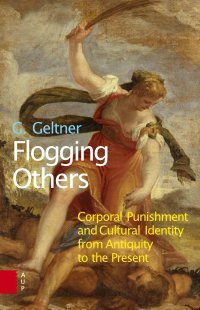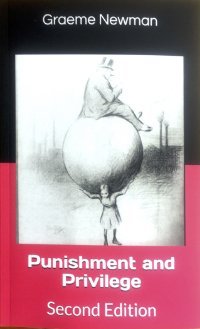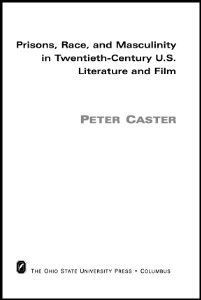By G. Geltner.
Corporal Punishment and Cultural Identity from Antiquity to the Present.“Corporal punishment is an evocative, almost self-explanatory term. But like other concepts with powerful and immediate connotations, it is poorly understood and rarely interrogated. Outside academia, and often within it, corporal punishment is the subject of simplistic analyses and misinformed expositions. The concept itself is ill-defined, its comparative history (as traced by historians of punishment) neglected, and there is little insight into its functions and meaning in a given cultural context,”
Amsterdam University Press (2014) 113p.
By Ida B. Wells-Barnett.
Lynch Law in All Its Phases. “The Afro-American is not a bestial race. If this work can contribute in any way toward proving this, and at the same time arouse the conscience of the American people to a demand for justice to every citizen, and punishment by law for the lawless, I shall feel I have done my race a service. Other considerations are of minor importance.”
Harrow and Heston Classic Reprint. (1892, 1893, 1894) 33 pages.
By Ida B. Wells-Barnett.
A Six-Weeks’ Record in the Center of Southern Civilization, As Faithfully Chronicled by the “Atlanta Journal” and the “Atlanta Constitution.” Also the full report ofLouis P. Levin. The Chicago Detective Sent to Investigate the Burning of Samuel Hose, the Torture and Hanging of Elijah Strickland, the Colored Preacher, and the Lynching of Nine Men for Alleged Arson. This Pamphlet is Circulated by Chicago Colored Citizens. 2939 Princeton Avenue, Chicago.
Harrow and Heston Classic Reprint. (1899) 20 pages.
By Sara M. Benson.
Race, Leavenworth, and the Culture of Law. Built in the 1890s at the center of the nation, Leavenworth Federal Penitentiary was designed specifically to be a replica of the US Capitol Building. But why? The Prison of Democracy explains the political significance of a prison built to mimic one of America’s monuments to democracy. Benson argues that Leavenworth reshaped the design of punishment in America by gradually normalizing state-inflicted violence against citizens.
UC Press (2019) 209 pages.
By Mrs. Mary B. Talbert and the anti-lynching crusaders..
Anti-Lynching crusaders are a band of women organized to stop lynching. Their slogan is: “A Million Women United To Stop Lynching.” They are trying to raise at least one dollar from every woman united with them and to finish this work on or before January 1st, 1923. ….How many people realize that since 1889 eighty-three women are known to have been lynched?
Harrow and Heston Classic Reprint. (1923) 8 pages.
By Fiona De Londras and Máiréad Enright.
Reforming Irish abortion law. The 8th Amendment to the Irish Constitution was ratified in 1983,1 and provides—in the form of Article 40.3.3—that: “The State acknowledges the right to life of the unborn and, with due regard to the equal right to life of the mother, guarantees in its laws to respect, and, as far as practicable, by its laws to defend and vindicate that right.” At first glance, the 8th Amendment may seem innocuous or merely aspirational. However, over time this provision, which could have been read in dozens of ways, has come to ground a near-absolute prohibition on abortion in Irish law.
Policy Press. (2018) 165 pages.
By Graeme R. Newman
Not everyone will agree with this book. Some will say it is a case for torture. It is not. But everyone who reads it, especially those concerned that today's longer, tougher sentences are turning the U.S. into an "inmate nation"-will be forced to rethink exactly what we mean by punishment. And justice. This book Is for everyone outraged by crime-and by the chaos of our criminal justice system. Why, Graeme Newman asks, has reform after reform failed to halt the spread of crime? How can we demand long, mandatory sentences when voters refuse to spend the money to build more and bigger prisons? Does anyone know what to do with those who break the law? An exciting sequel “Civilization and Barbarism: Punishing Criminals in the 20th Century” published by SUNY Press, takes the argument way beyond anything before.
Harrow and Heston Publishers. 2021. 166p.
By Pietro Marongiu and Graeme R. Newman
Gli Autori di questo saggio, che costituisce una pietra miliare negli studi sulla Vendetta, sono eminenti criminologi che hanno riunito diverse suggestioni provenienti dalla storia, dall’antropologia, dalla sociologia, dalla letteratura classica e dalla mitologia nell’intento di migliorare la nostra comprensione della violenza, della giustizia penale e del vigilantismo nella società moderna. Partendo da diverse rappresentazioni classiche della Vendetta nei miti greci, nei drammi di Shakespeare, nell’Inferno di Dante Alighieri, nel folklore del selvaggio west, fino alle saghe contemporanee dei supereroi come Batman e Superman, vengono indagate le radici storiche e culturali del desiderio universale di restituire i torti subiti. Marongiu e Newman affermano che tutti i comportamenti vendicativi originano da un “elementare senso di ingiustizia, un sentimento primitivo di ribellione contro un potere tirannico contro il quale si è impotenti a reagire” e che tutte le vendette sono fondamentalmente motivate da un bisogno generale e insopprimibile di uguaglianza, giustizia e reciprocità. Il libro ricostruisce la nascita e i cambiamenti che il bisogno di vendetta ha subito nel corso dei secoli e come esso ha influenzato i nostri sistemi legali, i nostri codici morali e i miti della nostra cultura.
Harrow and Heston Publishers. 2012. 152p.
By Graeme R. Newman
The classical philosophical and historical analysis of punishment. Explains, for the most part, why we punish the way we do, who for the most part are the objects of punishment, and who are the onlookers.
Harrow and Heston Publishers. 1985. 318p.
Published by Transaction Press, now Routledge. 2005.
By Graeme R. Newman.
How much should people be punished? Is an egalitarian distribution of punishment possible, or even desirable? Corporate criminals be punished more severely? Should disasters caused by corporations be treated as violent crimes and the executives punished accordingly? Sound modern? This collection of essays written in the 1990s is even more relevant in the 21st. century. Edited with a new and provocative introduction by leading authority on criminal punishment, Graeme R. Newman, Distinguished Professor Emeritus, University at Albany.
Harrow and Heston Publishers. 2012. 163p.
By Peter Caster.
A prison official in 1888 declared that it was the freeing of slaves that actually created prisons: “we had to establish means for their control. Hence came the penitentiary.” Such rampant racism contributed to the criminalization of black masculinity in the cultural imagination, shaping not only the identity of prisoners (collectively and individually) but also America’s national character. Caster analyzes the representations of imprisonment in books, films, and performances, alternating between history and fiction to describe how racism influenced imprisonment during the decline of lynching in the 1930s, the political radicalism in the late 1960s, and the unprecedented prison expansion through the 1980s and 1990s. Offering new interpretations of familiar works by William Faulkner, Eldridge Cleaver, and Norman Mailer, Caster also engages recent films such as American History X, The Hurricane, and The Farm: Life Inside Angola Prison alongside prison history chronicled in the transcripts of the American Correctional Association. This book offers a compelling account of how imprisonment has functioned as racial containment, a matter critical to U.S. history and literary study.
Columbus, OH: Ohio State University Press, 2008. 279p.
By Viviane Saleh-Hanna. A pioneering book on prisons in West Africa, Colonial Systems of Control: Criminal Justice in Nigeria is the first comprehensive presentation of life inside a West African prison. Chapters by prisoners inside Kirikiri maximum security prison in Lagos, Nigeria are published alongside chapters by scholars and activists. While prisoners document the daily realities and struggles of life inside a Nigerian prison, scholar and human rights activist Viviane Saleh-Hanna provides historical, political, and academic contexts and analyses of the penal system in Nigeria. The European penal models and institutions imported to Nigeria during colonialism are exposed as intrinsically incoherent with the community-based conflict-resolution principles of most African social structures and justice models. This book presents the realities of imprisonment in Nigeria while contextualizing the colonial legacies that have resulted in the inhumane brutalities that are endured on a daily basis.. Ottawa: University of Ottawa Press, 2008. 534p.















